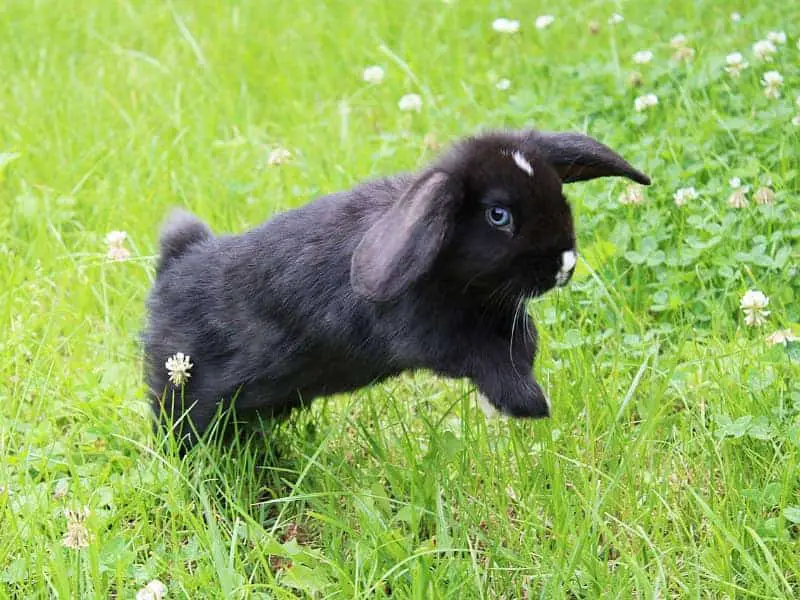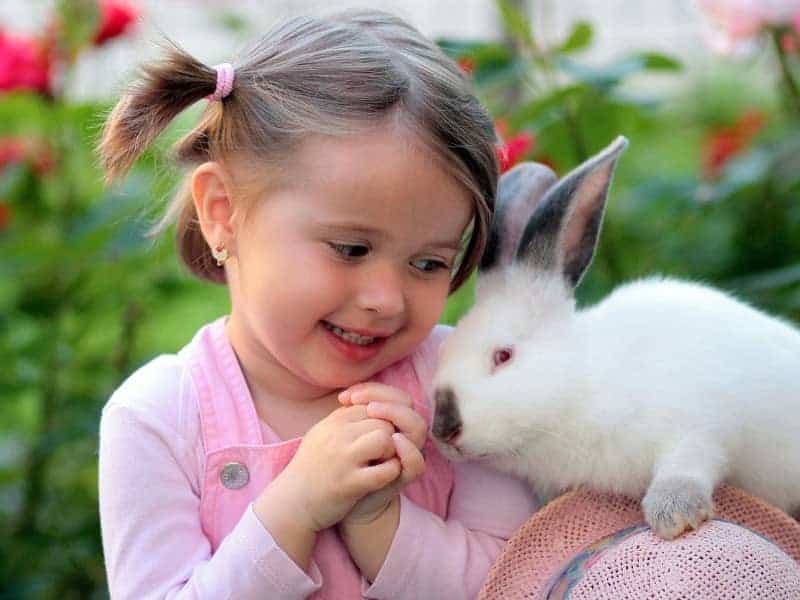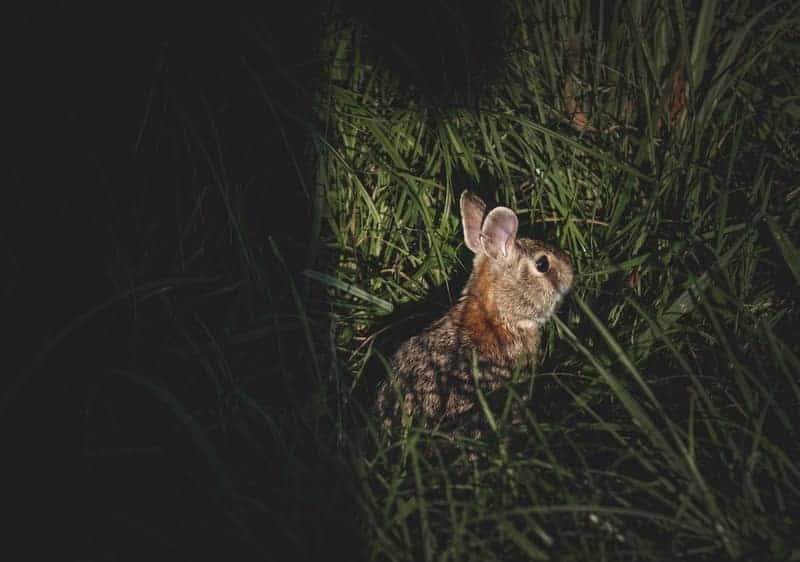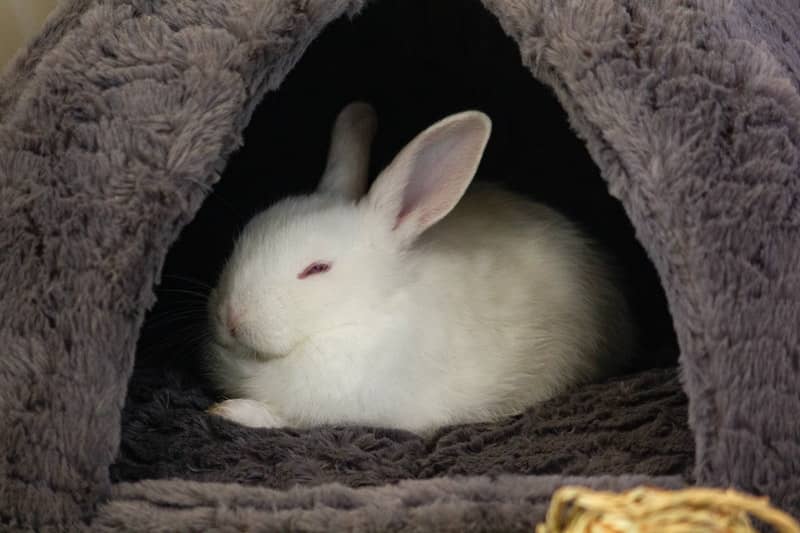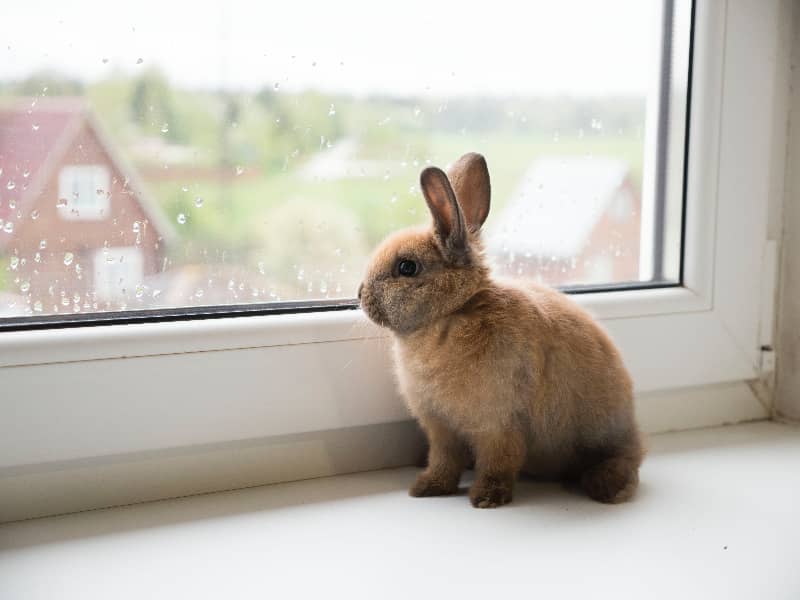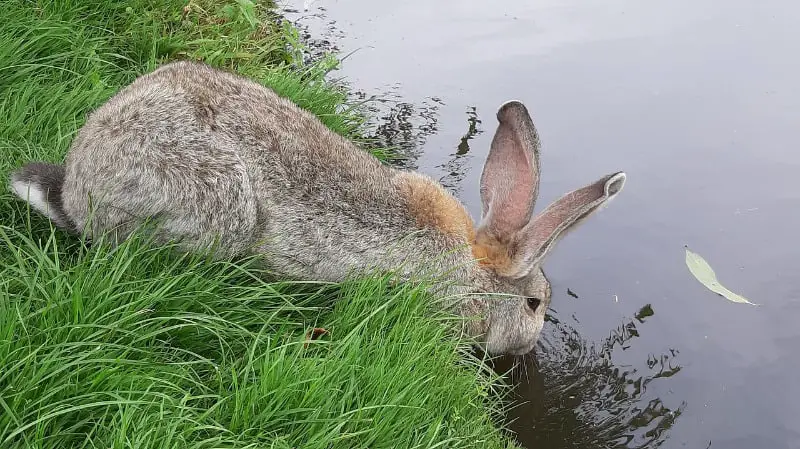
Can rabbits swim?
In principle, rabbits can swim, but it is more paddling movements similar to a dog. They keep themselves so well above water and can thus cross waters on the run. However, a rabbit would go into the water voluntarily only in extreme cases, because a real swimmer it is not. Why this is so and why water can also be dangerous for your rabbit you will learn here today.
This is what happens to your rabbit when swimming
As mentioned earlier, your rabbit can swim 99 %, however his fur is his biggest obstacle in doing so. Just as we wear our clothes, your rabbit has his fur as clothing. If you have ever been swimming with clothes on, then you know how your rabbit feels. The fur gets soaked up with water and it gets heavier and heavier, making swimming more and more difficult.
The reason the rabbit fur is soaked is because the fur is only slightly greasy. Unlike other animals that live in the water environment, such as a beaver, rabbits have very little fat in their fur. After a maximum of 10 seconds, it becomes very strenuous for your rabbit to swim and you can assume that your rabbit will then no longer do so voluntarily.
Again and again we see videos where rabbits swim. We are sure that in almost all videos that can be found on the net on this subject, the owners have put the animals in the water. What we think about this, you can imagine. Nevertheless, we do not want to lump everyone together here, because there is a very small percentage of rabbits that like to go into the water to cool off in the summer.
Why a rabbit goes swimming
There are several reasons for this, but they all have one common reason. That is the fear of a situation and the escape behavior of your rabbit is triggered. As I'm sure you know as a rabbit owner, almost all rabbits are skittish and get scared quickly. This is a good thing, because it keeps their escape reflex and they move to safety when something unexpected happens.
And this is where the situation comes that rabbits jump into the water and swim. Because when the escape reflex kicks in, it's all about getting to safety as quickly as possible and this can possibly be through water and the associated swimming. Should you ever observe when a rabbit swims, then note the eyes.
The eyes will be wide open and blinking will not occur. In addition, the rabbit's neck will be massively hyperextended in order to recognize the danger. Another reason for this hyperextension is that it is the only way the rabbit can keep its head above water. This posture is anything but natural, and it can damage the cervical spine.
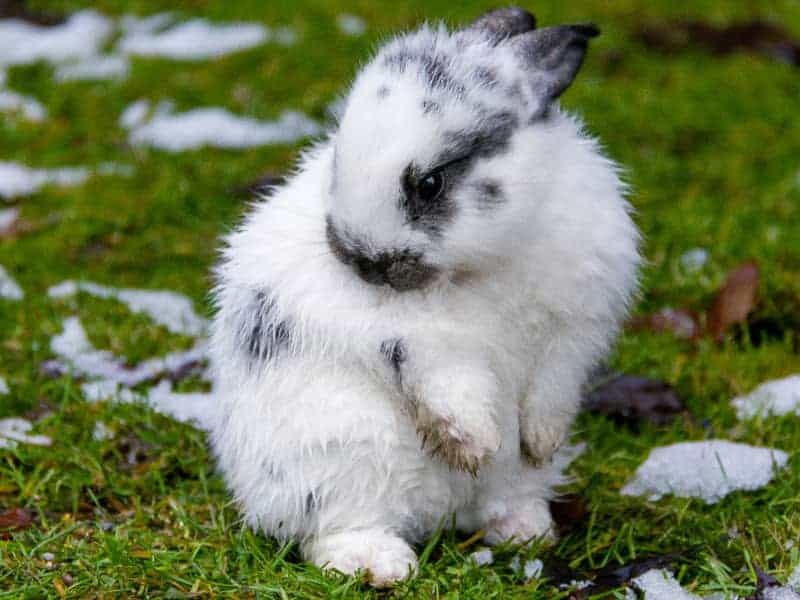
My rabbit fell into the water, what to do?
In the exuberance it happens already once that a rabbit falls unintentionally into the water. Through carelessness of the owner or through the curiosity of the rabbit. Ideally, you should help your rabbit to get out of the water as quickly as possible. This can be through an exit that you offer him or you catch him and put him on a dry towel where you dry him carefully.
With a long haired rabbit, you must not hesitate for a second and get it out of the water immediately. Due to the long coat, a lot of water is immediately absorbed and the body weight increases in a fraction of a second. A longhaired rabbit can only stay afloat for a few seconds and would then drown.
If you have a pool or a pond in your garden where your rabbits move, we recommend that you secure it. Alternatively, you can also make sure that your rabbit has a way to get out of the water if it falls in. This can be a flat staircase, a board with possibilities to hold on to or similar.
Rabbit swims, sneezes and gets bad air after being in water
If you notice these signs in your rabbit after it has been in the water, then you should organize a visit to the vet as soon as possible. These are signs that water has entered the respiratory tract. This water may not be excreted by the rabbit on its own in a natural way.
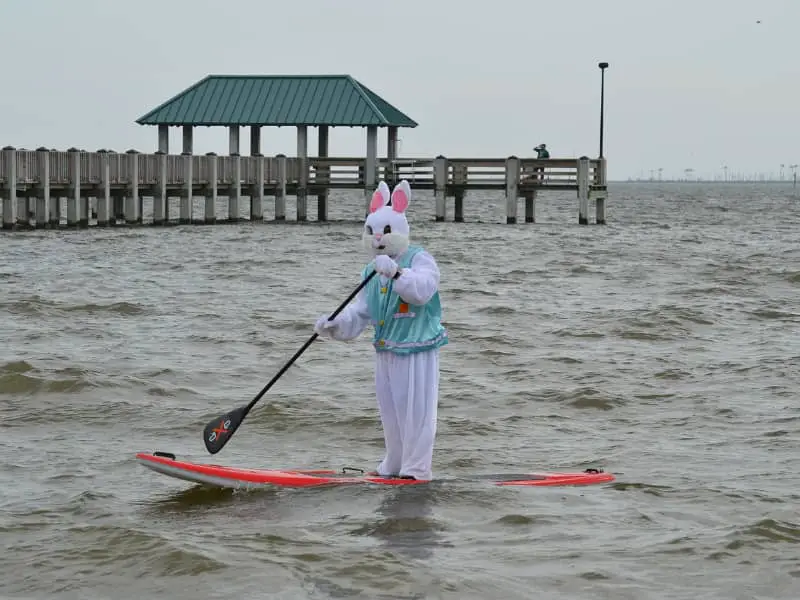
And yet it swims, the wild swamp rabbit
Although rabbits are not swimmers, there is one exception. It is a genus of rabbit that exists only in North America. It lives mostly in swamps and is called a swamp rabbit in the United States. In some regions, this species of rabbit is also called cottontail rabbit. These rabbits have a much higher percentage of fat in their fur, which allows them to swim for longer periods of time.
This breed of rabbits has adapted to its habitat in the course of evolution. This is because in the regions where these rabbits live, it is essential to travel paths through the water. Therefore, rabbits can easily cover longer distances in the water.
Author

-
Garden animal - A life with nature
Welcome to my animal blog! My name is Dirk and I am happy to take you on my journey through the fascinating world of animals and gardening.
Born 54 years ago, I have had an insatiable curiosity for the animal world around me since childhood. Although I have moved professionally in other industries, my true passion has always been animals and nature. It is remarkable how a small garden has become such an important part of my life.
Many of my fondest memories are associated with the animals that share our home. Whether it's the curious squirrels that scurry across the trees in the morning, the colorful variety of birds that visit our feeders, or the busy bees and butterflies that pollinate our flowers, every moment with them is invaluable to me.
This blog is my contribution to share my experiences, discoveries and insights with like-minded people. Here I will share stories of unforgettable encounters with animals, give tips on gardening and creating wildlife-friendly habitats, and take you on my journeys through nature.
Thank you so much for being here!
Cordial,
Dirk aka garden animal
Last posts
- 27. February 2024PetsVeganes Hundefutter – Grün und Gesund?
- 18. January 2024ChickensOregano für Hühner
- November 27, 2023HamsterDiurnal hamsters
- November 24, 2023HamsterHamster hammock

